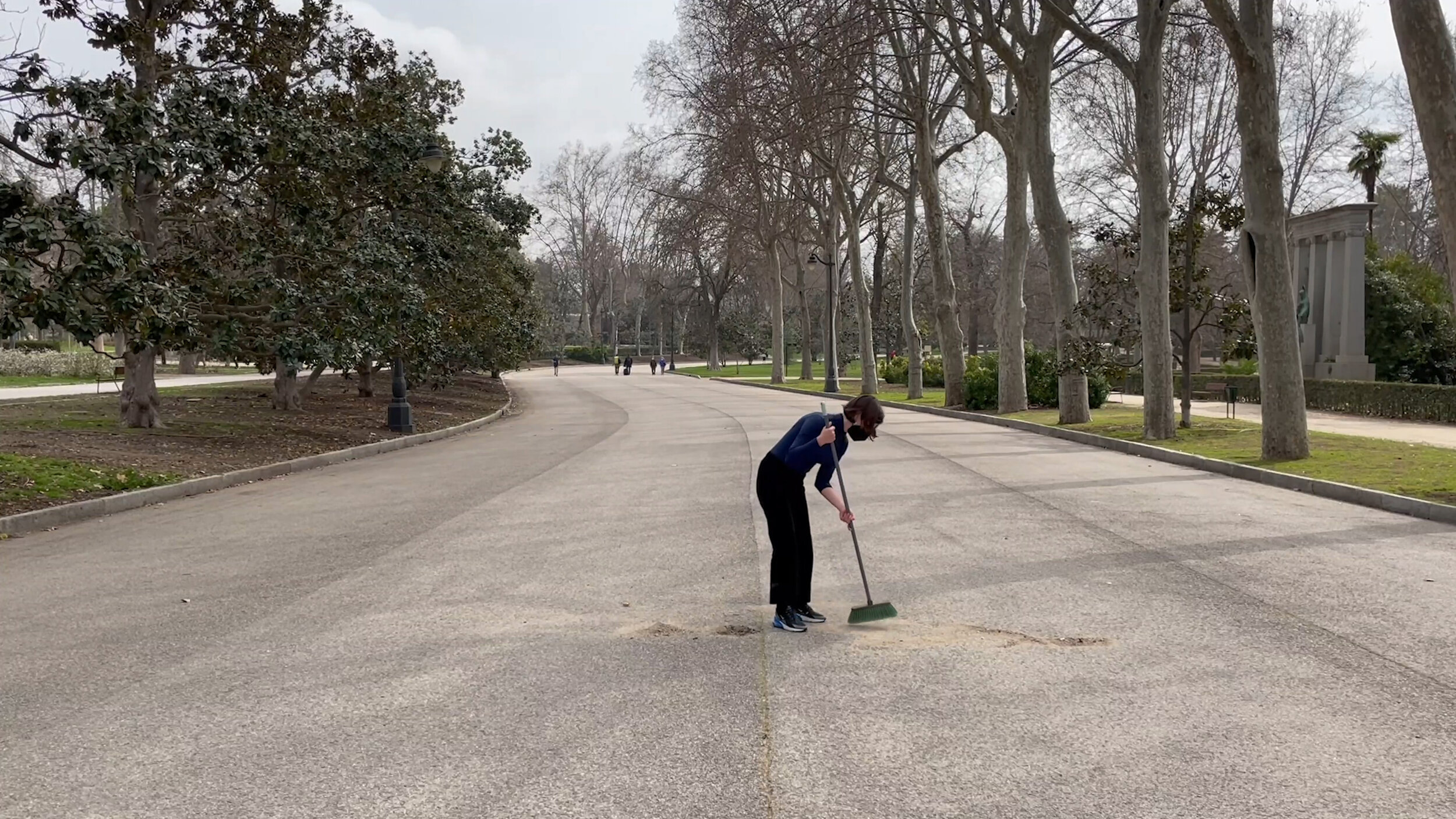
Follow the Dust
CURATED BY CLARA BOLÍVAR
These nine artistic research projects follow the dust to wonder about that minimal matter in constant movement that results from the wear produced by the interaction between bodies and materials, which is lifted by the wind to relocate it and bury it again until chance and circumstance dictate another place for it.
While in museums and institutional archives dust is undesirable matter, here "museums" and "archives" are devices that allow dust to be heard. Amanda Cervantes and Jose Luis Benavides dust off archives to search for stories from the past that challenge them in the present, based on what they call queer time. Sofía Acosta-Varea presents a poetic and playful vision of archives that recorded the consequences of oil extraction in the Amazon. The dust sheltered by the Animist Museum of the Lake of Texcoco created by Adriana Salazar, is witness of millennial changes next to pieces of rubble from the most recent modernization projects. The Museum of Modern Mars presents images of dislocated times from space, which materialize in a cloud of stellar dust that envelops a lost traveler in dreams.
Erosion shapes the earth's crust due to the effect of wind, rain, maritime and glacial processes and the actions of living beings. The artistic work investigates the effects of wear resulting from extractive violence that the eye cannot distinguish, but which in a close look, show the historical continuities in the forms of territorial exploitation. Miguel Fernández de Castro documents the subtleties of the ground at its most fragile points and its slight variations on the surface. From the perspective of Iurhi Peña, the violated landscape has a correlate in the imaginary about "the other" that is produced by the media. The Catrileo + Carrión Community open an invitation to become aware of a notion of a sea of fluid memories that breaks with linear time as the only way to understand life. Daniela Medina Poch and Diana Cantarey observe and collect dust in private and shared spaces, and shape it to challenge walkers to observe the messages it brings us.
Artistic practices give dust a voice as material witness and transforming agent in expanded times that remained under the imposition of so-called progress, which has resulted in imposed hierarchies of human beings and the "non-human". Underneath neglect, indifference, dispossession and forced silence, voices raise from artistic research and community efforts, where spaces for enunciation, inquiry, encounter, transformation and flourishing are opened.
Estos nueve proyectos de investigación artística siguen al polvo para preguntarse por esa materia mínima en constante movimiento que resulta del desgaste producido por la interacción entre cuerpos y materias, que es levantada por el viento para reubicarla y sepultarla nuevamente hasta que el azar y la circunstancia dispongan de otro lugar para ella.
Mientras que en los museos y archivos institucionales el polvo es materia indeseable, aquí “museos” y “archivos” son dispositivos que permiten que el polvo sea escuchado. Amanda Cervantes y Jose Luis Benavides desempolvan archivos para buscar historias del pasado que les interpelan en el presente, a partir de lo que nombran tiempo queer. Sofía Acosta–Varea presenta una visión poética y lúdica de archivos que registraron las consecuencias de la extracción de petróleo en la Amazonia. El polvo que resguarda el Museo Animista del Lago de Texcoco creado por Adriana Salazar, es testigo de cambios milenarios junto a pedazos de escombro de los proyectos más recientes de modernización. El Museo de Marte Moderno presenta imágenes de tiempos dislocados desde el espacio, que se materializan en una nube de polvo estelar que envuelve en sueños a una viajera perdida.
La erosión modela la corteza terrestre por efecto del viento, la lluvia, los procesos marítimos, glaciales y las acciones de los seres vivos. La labor artística investiga los efectos del desgaste producto de las violencias extractivistas que la vista no alcanza a distinguir, pero que desde la mirada cercana muestran las continuidades históricas en las formas de explotación territorial. Miguel Fernández de Castro documenta las sutilezas de la tierra en sus puntos de mayor fragilidad y sus ligeras variaciones en la superficie. Desde la perspectiva de Iurhi Peña, el paisaje vulnerado tiene un correlato en el imaginario sobre “el otro” que es producido por los medios de comunicación. La Comunidad Catrileo + Carrión abren la invitación a sensibilizarse ante una noción de mar de memorias fluidas que rompe con el tiempo lineal como única forma de entender la vida. Daniela Medina Poch y Diana Cantarey observan y recolectan el polvo en espacios privados y compartidos, y le dan forma para interpelar a los caminantes a observar los mensajes que éste nos trae.
Las prácticas artísticas le dan voz al polvo como testigo material y agente transformador en tiempos expandidos que quedaron debajo de la imposición del llamado progreso, el cual ha resultado en jerarquías impuestas a los seres humanos y a lo “no humano”. Debajo del descuido, de la indiferencia, del despojo y de los silenciamientos forzados se levantan voces desde la investigación artística y los esfuerzos comunitarios, donde se abren espacios de enunciación, indagación, encuentro, transformación y florecimiento.









